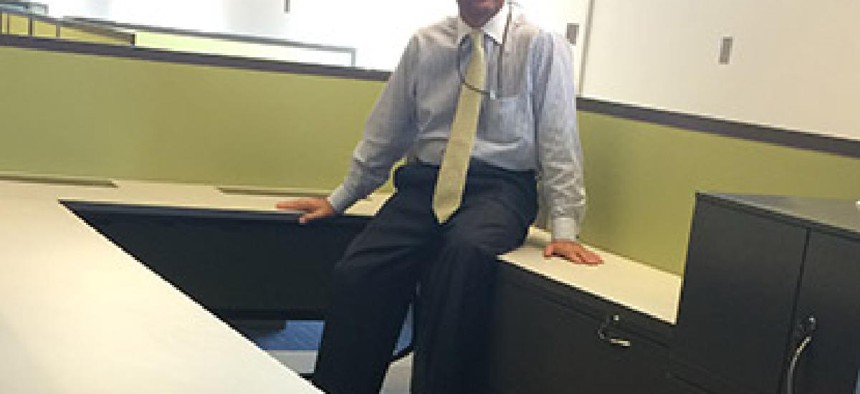BBG embracing the open office

The Broadcasting Board of Governors is moving into a historic building, but choosing collaboration and flexibility over traditional offices and cubicles.

André Mendes, director of global operations for the Broadcasting Board of Governors, says the open floorplan is about equity.
Following in the footsteps of the General Services Administration, the Broadcasting Board of Governors will be moved into their new "open" offices by the end of the year.
The new office space, located on the fourth floor of the historic Cohen Building in Washington, D.C., will eliminate individual offices and feature 24 meeting rooms, low partitions, treadmill workstations, standing desks, wireless Internet throughout and many new employee amenities.
André Mendes, director of global operations at BBG, said all of BBG Technology, Services and Innovation (TSI) will be moved in by the end of 2014. The relocation will happen in two phases over the next few months.
To set an example, Mendes will be the first to move into the office (which is still getting its finishing touches), using the same type of desk, chair and computer as everyone else. The new plan is about equity, Mendes said.
The move, which will save $2.6 million in rent costs for fiscal 2015, was prompted when BBG learned that some of its staff would be losing their office space to the Department of Health and Human Services, which was going through a consolidation process.
GSA presented BBG with the idea of moving to another building nearby, but agency leaders countered with an idea they had been formulating -- building a new open office space.
"They were stunned," Mendes said of GSA’s reaction.
Similar to GSA's new workspace, the new BBG office features glass-enclosed meeting rooms, across-the-walls whiteboards, video teleconference capability in all conference rooms and plenty of daylight streaming through windows and across the open office.
GSA also introduced the BBG team to the design firm it used in its renovations, to help BBG come up with the drawings and concept for what the open office space would look like. In the new model, they increased their capacity from 80 to 153 personnel.
The new office space will also save money in printing costs. Instead of each individual having their own printer, which was the case for most employees, there will be several office-wide printers. According to Mendes, the BBG has been spending about half a million dollars every year on printing costs.
"I'd rather spend that money on mission than on printer cartridges," he said.
He also hopes that the new workspace will boost morale at the BBG. Historically, the agency has had one of the lowest employee morale ratings in government, Mendes said. He compared the ominous hallways in the old space to that of a "mental hospital," and said he believes that having employees working in a more open space will help turn that around.
"One of the ways to really raise morale is to get people more and more involved in the mission, in what we do here," Mendes said. "Bringing everyone together, getting them out of their offices and into open spaces, collaborating, feeling that the sacrifice they’re making is on behalf of the mission I believe is one of the ways to get people involved and a self esteem associated with that sacrifice."
With this new floor plan, TSI will adopt a hoteling system for some of the desk areas and encourage employees to take advantage of telework options.
The BBG hopes to continue reducing its overall real estate footprint and expand to other parts of the building in the future.
One thing is certain: in a building that has been standing since 1938, there is nothing outdated about the fourth floor.
NEXT STORY: DOD health agency embraces data standardization





